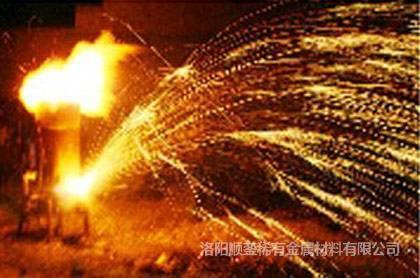28
2018
-
12
Introduction of Nonferrous Metal Materials
Source: Network
Release time:2018-12-28 17:54
 Non-ferrous metals refer to all metals except iron, chromium and manganese. In 1958, China included iron, chromium and manganese in ferrous metals, and 64 metals other than iron, chromium and manganese were included in non-ferrous metals. The 64 non-ferrous metals include: aluminum, magnesium, potassium, sodium, calcium, strontium, barium, copper, lead, zinc, tin, cobalt, nickel, antimony, mercury, cadmium, bismuth, gold, silver, platinum, ruthenium, rhodium, palladium, osmium, iridium, Beryllium, lithium, rubidium, cesium, titanium, zirconium, hafnium, vanadium, niobium, tantalum, tungsten, molybdenum, gallium, indium, thallium, germanium, rhenium, lanthanum, cerium, praseodymium, neodymium, samarium, europium, gadolinium, terbium, dysprosium, holmium, erbium, thulium, ytterbium, lutetium, scandium, yttrium, thorium.
Non-ferrous metals refer to all metals except iron, chromium and manganese. In 1958, China included iron, chromium and manganese in ferrous metals, and 64 metals other than iron, chromium and manganese were included in non-ferrous metals. The 64 non-ferrous metals include: aluminum, magnesium, potassium, sodium, calcium, strontium, barium, copper, lead, zinc, tin, cobalt, nickel, antimony, mercury, cadmium, bismuth, gold, silver, platinum, ruthenium, rhodium, palladium, osmium, iridium, Beryllium, lithium, rubidium, cesium, titanium, zirconium, hafnium, vanadium, niobium, tantalum, tungsten, molybdenum, gallium, indium, thallium, germanium, rhenium, lanthanum, cerium, praseodymium, neodymium, samarium, europium, gadolinium, terbium, dysprosium, holmium, erbium, thulium, ytterbium, lutetium, scandium, yttrium, thorium.
The strength and hardness of non-ferrous alloy is generally higher than that of pure metal, the resistance is larger than that of pure metal, the temperature coefficient of resistance is small, and it has good comprehensive mechanical properties. Commonly used non-ferrous alloys are aluminum alloy, copper alloy, magnesium alloy, nickel alloy, tin alloy, tantalum alloy, titanium alloy, zinc alloy, molybdenum alloy, zirconium alloy, etc.
Because of the importance of rare metals in modern industry, they are sometimes divided from non-ferrous metals and become a separate class. And with ferrous metals, non-ferrous metals side by side, become the three major categories of metal.
Non-ferrous metals are the basic materials for the development of the national economy. Most industries such as aviation, aerospace, automobiles, machinery manufacturing, electric power, communications, construction, and home appliances are based on non-ferrous metal materials. With the rapid development of modern chemical industry, agriculture and science and technology, non-ferrous metals play an increasingly important role in human development. It is not only an important strategic material in the world, an important means of production, but also an important material for the indispensable consumption of information in human life.
Key words:


